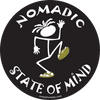The authentic handmade vegan and machine washable rope sandals since 1999
How It's Made
We've made some mistakes along the way, which we learned from, we constantly look at quality, trying to standardise handmade as best we can without losing any of the love that goes into each pair.
ROPE
The rope is made in North Carolina and it is partly reclaimed polypropylene cord. We found the polypropylene to be the best and most consistent option for making quality sandals. This rope is colorfast and super durable. Basically it is one of the strongest ropes known to humans. When we look at environmental impact, one of the most important things to look at is durability. That is why we make the best rope and do not cut any corners. Durability is sustainability.
Why we do not use Hemp instead? We found through a lot of expense and trials that these fibres didn't work well as rope for shoes, at least not the way we wanted them to function.
We found the poly cord to last long, durable, functional and light. We did a lot of research on this material to figure out its environmental impact and our impact and decided it to fit with our morals. Here's a brief analysis of the material you can look at.
https://www.fibervisions.com/about-us/sustainability/sustainability-throughout-our-product-lifecycle
We of course look at all our footprint, especially being a sandal company. We stared right away figuring out what to do with our scraps: bags, purses, leashes, rope art; so we don't put any material into the land fill.
It was our desire to create a product where there was virtually no waste. We are almost there! About 90% of our waste can be recycled into other products (thank you No Scraps Left Behind!).
Soles
As we evaluated our product line we decided to add a sole option to some of our popular styles. After researching and some trial and error we ended up finding some different sole suppliers, like Vibram and SVIG soles who have been soling shoes around the world. Our sandals with soles are made in the US using vintage sandal making equipment. The soles are cut and glued onto the rope using low v.o.c glue. Therefore, it is very common to see variations within sandals from the same pair, very normal to see (not often) glue residue. Every piece of the sandals is made my hand. This process is time-consuming and very meticulous.
Throughout the last 10 years, we have gone through many different soling bottoms, the reason you would see different soles on different styles (for example, the Vibram sole on Toe Joe, Romano and Kyma is different than the SVIG Sole on JC with Sole). We are quite happy to the point where our research has led us and we are confident of the quality of our soles. We are now using our own designed partly recylced soles and soon we will have them available in SA market.

